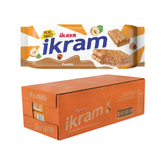The Enigmatic Beauty of the Gypsy Girl Mosaic
The Enigmatic Beauty of the Gypsy Girl Mosaic
A Face That Captures Centuries
In the heart of southeastern Turkey, in the vibrant city of Gaziantep, lies one of the most hauntingly beautiful faces ever immortalized in stone — the Gypsy Girl Mosaic. With her deep, expressive eyes and soft, almost sorrowful gaze, she has captivated millions of visitors and become the symbol of an entire city’s cultural soul.
Discovered in the ancient Roman city of Zeugma, this mosaic is not just a piece of art; it is a bridge between civilizations, emotions, and time. When you stand before it at the Zeugma Mosaic Museum, you can almost feel her looking back — through thousands of years — whispering stories of love, loss, and resilience.
The Birthplace of a Masterpiece — Zeugma, the City of Mosaics
To understand the Gypsy Girl, one must travel back in time to Zeugma, an ancient city founded around 300 BCE by Seleucus I Nicator, one of Alexander the Great’s generals. The city thrived along the banks of the Euphrates River, serving as a key trade and cultural center that connected East and West.
Zeugma’s wealth and artistic expression blossomed during the Roman period. Luxurious villas, adorned with elaborate floor mosaics, became symbols of prestige and refinement. Among them, the Gypsy Girl was born — a fragment of a much larger scene that once decorated the floor of a Roman villa.
When Zeugma was partially submerged under the waters of the Birecik Dam in the early 2000s, archaeologists worked tirelessly to rescue its treasures. It was during these excavations that the Gypsy Girl Mosaic emerged, miraculously preserved despite centuries underground.
The Mystery Behind Her Eyes
The most striking feature of the Gypsy Girl is undoubtedly her eyes. Large, round, and full of life, they seem to follow you wherever you go. Art historians and psychologists alike have tried to decipher the emotion captured in that gaze — is it sadness, wisdom, fear, or longing?
No one knows for sure who the young woman in the mosaic truly represents. Some believe she is Gaia, the Earth goddess, symbolizing fertility and nature. Others think she could be a depiction of a nymph or a mortal woman, perhaps the daughter of a wealthy Roman family.
Her anonymity only adds to her power. Without a name, she becomes every woman — a timeless representation of beauty, mystery, and strength.
From Forgotten Dust to National Treasure
The discovery of the Gypsy Girl in 1998 transformed Gaziantep forever. What was once a regional archaeological find soon became an international sensation. Her image appeared on postcards, museum banners, and even the walls of local cafes.
The Zeugma Mosaic Museum, which now houses her, opened in 2011 and quickly became one of the largest mosaic museums in the world. The Gypsy Girl is displayed in a special dimly lit room, allowing visitors to experience her emotional impact in near silence. Many people describe the moment as almost spiritual — as if her eyes reach into your soul.
Today, she is not just an artifact; she is a symbol of Gaziantep’s resilience and artistry, representing how Turkey preserves and celebrates its past while embracing the modern world.
Gaziantep — The City of Flavor and Heritage
It’s impossible to speak of Gaziantep without mentioning its other great treasure — food. Known as Turkey’s culinary capital, Gaziantep’s cuisine is as rich and layered as its history.
After visiting the mosaic museum, travelers often find themselves wandering into the city’s old bazaars, where the scent of roasted pistachios, baklava syrup, and freshly baked bread fills the air. The same culture that created the Gypsy Girl’s mosaic artistry continues today through culinary craftsmanship.
Baklava, the city’s pride, is an edible masterpiece — delicate layers of thin dough filled with Antep pistachios and soaked in golden syrup. Locals often say that “a bite of baklava and a look into the Gypsy Girl’s eyes are both ways to taste eternity.”
The Art of Connection — From Ancient Stones to Modern Souls
What makes the Gypsy Girl Mosaic so powerful is not just its beauty, but its ability to connect the ancient with the modern. Each tiny stone, carefully placed by an artist two millennia ago, represents a heartbeat of a culture that still thrives today.
When visitors stand before her, they often describe a moment of stillness — a deep emotional pause where time seems irrelevant. In a world filled with speed and distraction, this ancient mosaic invites reflection.
It reminds us that art is not only about what we see, but about what we feel. Her eyes seem to carry the collective memory of the region — the laughter of Roman banquets, the silence of forgotten ruins, the melody of call to prayer, and the hum of Gaziantep’s bustling streets.
A Journey Through Time and Taste
A trip to Gaziantep is not just an archaeological experience — it’s a sensory one. Imagine spending your morning at the Zeugma Mosaic Museum, walking through halls filled with vibrant artworks that once decorated the floors of Roman villas. Then, as the afternoon sun sets, you step into a local bakery where freshly made kadayıf and warm pistachio baklava await you.
Each taste, each sight, tells a story. You begin to realize that Turkish culture is woven together like a mosaic — each tradition, flavor, and face forming part of a greater masterpiece.
And at the center of that masterpiece stands the Gypsy Girl, quietly reminding us that beauty endures even when centuries pass and civilizations fade.
More Than a Mosaic — A Reflection of Turkey’s Spirit
The Gypsy Girl’s fame extends beyond archaeology; she embodies Turkey’s identity — a land where East meets West, where history breathes alongside modern life. From Istanbul’s domes to Cappadocia’s balloons, from the beaches of Antalya to the kitchens of Gaziantep, Turkey is a living mosaic itself — each piece unique, yet harmoniously connected.
For international visitors, the Gypsy Girl is often the first real encounter with the emotional depth of Turkish culture. She represents a bridge between the tangible and the spiritual, between art and humanity.
Just as Turkey combines ancient roots with modern expression, the Gypsy Girl stands as a symbol of timeless grace and resilience. Her eyes tell us that beauty is not fleeting — it evolves, survives, and continues to inspire.
Visiting the Gypsy Girl — A Must for Every Traveler
If you ever find yourself in Turkey, a trip to Gaziantep should be on your itinerary. The Zeugma Mosaic Museum is easily accessible and open year-round. Plan your visit early in the day to enjoy the mosaics in peace, and don’t forget to explore the nearby historical sites and markets.
Nearby, you can find artisan workshops, spice shops, and dessert houses offering everything from pistachio baklava to Turkish delight. Many travelers describe Gaziantep as a living museum — where every street corner tells a story, and every flavor evokes history.
By the time you leave, you’ll realize that the Gypsy Girl is not just watching from her mosaic — she’s watching over an entire city that continues her legacy.
The Eyes That Never Stop Speaking
The Gypsy Girl Mosaic is more than art — it is emotion captured in stone, a window into the soul of Turkey. She is a reminder that even after thousands of years, true beauty never fades.
Gaziantep honors her not just in museums, but in every act of creation — from a baker’s touch to a craftsman’s design. Her gaze invites you to look deeper, to see not only history but humanity itself.
So next time you enjoy a piece of Turkish baklava, sip your coffee, or plan your dream trip to Turkey, remember her eyes — the eternal gaze of the Gypsy Girl, silently telling the world:
“Art is life, and life is meant to be remembered.”











